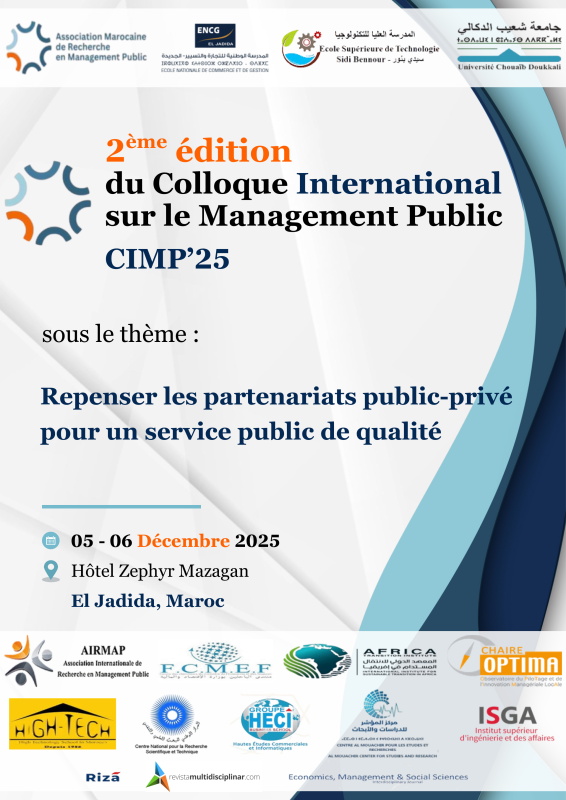The Influence of Influencer Marketing in the Beauty Industry
Strategies, Impact and Future Trends
DOI:
https://doi.org/10.23882/cdig.24277Keywords:
influencer prescription, communication, buying influence, consumer, beautyAbstract
Influencer marketing has gained relevance as an advertising strategy in the digital age. Emerging on platforms such as blogs and evolving into social networks such as Instagram, its value lies in the authenticity and recommending power of influencers.
Different authors have postulated that influencers are perceived as opinion leaders, generating a significant impact on the purchasing decisions of their followers (Garg & Bakshi, 2024). Underlining the importance of parasocial interaction and perceived credibility. They also point out that the influencer's popularity and perceived uniqueness of the brand are crucial to the success of advertising campaigns (De Veirman, Cauberghe & Hudders, 2017).
As for the results, the research shows that micro-influencers generate greater engagement than macro-influencers, thanks to the closer connection with their audience. The use of personal and emotional narratives in advertising content significantly increases engagement and impact on purchase intentions. However, the perception of authenticity and transparency remains a challenge.
The main findings of the study include that reels generate more dynamism and interaction than posts; personal stories and emotions increase interaction and impact; And authenticity is crucial to the trust and effectiveness of campaigns. Original and authentic content generates more interactions. The effectiveness of influencers depends on their proper selection, the authenticity of the content, and the transparency of collaborations. Although their direct impact on sales is limited, they are effective in increasing visibility and engagement for beauty brands on Instagram.
References
Alvira Martín, F. (2004). La encuesta: una perspectiva metodológica. CIS.
Angraini N. (2023). Social Media Marketing Influencer: Literature Review on Promotional Strategies Using the Influence of Social Media Celebrities. International Journal of Economic Research and Financial Accounting, 1(4). https://doi.org/10.55227/ijerfa.v1i4.42
Carreño, Y. (2023, 21 noviembre). Marketing de influencers: Evolución y perspectivas. Blog de Acumbamail. https://bit.ly/3VyFb1r(https://bit.ly/3VyFb1r)
Casaló, L. V., Flavián, C., & Ibáñez‐Sánchez, S. (2020b). Influencers on Instagram: Antecedents and consequences of opinion leadership. Journal of Business Research, 117, 510-519. https://doi.org/10.1016/j.jbusres.2018.07.005
Gabilondo Cámara, A. (2024). Un estudio sobre el Marketing de Influencers en la industria de la cosmética y la belleza en España. [TFG]. Palencia Alacid, P.(dir,). Universidad Pontificia Comillas, Facultad de Ciencias Económicas y Empresariales.http://hdl.handle.net/11531/83742
Garg, M., & Bakshi, A. (2024). Exploring the effects of audience and strategies used by beauty vloggers on behavioural intention towards endorsed brands. Humanities & Social Sciences Communications, 11(1).https://doi.org/10.1057/s41599-024-03133-y
Goldfish. (2023, 31 mayo). La historia del influencer marketing. Goldfish.https://goldfish.com.co/la-historia-del-influencer-marketing/
Guerrero Navarro, D., Cristófol Rodríguez, C., & Gutiérrez Ortega, P. (2022). La evolución de la relación entre marcas e influencers españolas de moda tras la pandemia. Revista de Comunicación de la SEECI, 55, 1–28.https://doi.org/10.15198/seeci.2022.55.e7547.
Hernández, K. (2021, 22 enero). Influencers. Origen, evolución y futuro.https://bit.ly/4gatUMU
Interviewing experts. (2009). En Palgrave Macmillan UK eBooks.https://doi.org/10.1057/9780230244276
Iglesias, M.L., Martín-Sánchez, D. y Rodríguez, S.F. (2023). Instagram sin filtros: Estudio de la manipulación fotográfica en redes sociales. Miguel Hernández Communication Journal, 14, 491-513. https://doi.org/10.21134/mhjournal.v14i.1995
Lewis, T. (2022, 30 diciembre). ¿Cuál es el valor de la prescripción de los influencers? Agencia TEAMLEWIS.https://bit.ly/3ZKoOkL
Li, P., & Sun, Y. (2024). Impact of internet celebrities’ short videos on audiences’ visit intentions: Is beauty power? Humanities & Social Sciences Communications, 11(1).https://doi.org/10.1057/s41599-024-02895-9
Marin, N. C. G., Arriciaga, R. V. G., Estrada, J. C., & Sumba, N. (2024). El marketing de influencias y su efecto en la decisión de compra de los clientes en el sector de la moda y la belleza en el Ecuador.Doxa. Comunicación.https://doi.org/10.31921/doxacom.n38a1993
Matellanes, M., & Rodríguez Velasco, V. (2021). Conexión de los/las influencers con la generación Z en la industria del maquillaje. Revista Prisma Social, (35), 199–220. https://revistaprismasocial.es/article/view/4351
Moustakas, E., Lamba, N., Mahmoud, D. K., & Ranganathan, C. (2020). Blurring lines between fiction and reality: Perspectives of experts on marketing effectiveness of virtual influencers. IEEE.https://doi.org/10.1109/cybersecurity49315.2020.913886
Neuendorf, K. A. (2010). Content Analysis—A methodological primer for gender research. Sex Roles, 64(3-4), 276-289.https://doi.org/10.1007/s11199-010-9893-0
Or, H. (1969). Content analysis for the Social Sciences and Humanities. CiNii Research.https://cir.nii.ac.jp/crid/1573387449369524864
PuroMarketing. (2015, septiembre 24). ¿Tienen verdaderamente los influencers un valor real para las marcas? PuroMarketing.https://bit.ly/4fcwgcE
Rattray, J., & Jones, M. (2007). Essential elements of questionnaire design and development. Journal of Clinical Nursing, 16(2), 234-243.https://doi.org/10.1111/j.1365-2702.2006.01573.x
Romo, H. L. (1998). La metodología de la encuesta. En Galindo, J. (Coord.), Técnicas de investigación en sociedad, cultura y comunicación. Pearson.
Schwemmer, C., & Ziewiecki, S. (2018). Social media sellout: The increasing role of product promotion on YouTube. Social Media and Society, 4(3).https://doi.org/10.1177/2056305118786720
Sierra, F. (1998). Función y sentido de la entrevista cualitativa en investigación social. En Galindo, J. (Coord.), Técnicas de investigación en sociedad, cultura y comunicación. Pearson.
Urrutia Egaña, M., Barrios Araya, S., Gutiérrez Núñez, M., & Mayorga Camus, M. (2014). Métodos óptimos para determinar la validez de contenido. Educación Médica Superior, 28(3), 547-558.
Von Soest, C. (2023). Why Do We Speak to Experts? Reviving the Strength of the Expert Interview Method. Perspectives on Politics, 21(1), 277-287.
Widyanto, H. A., & Agusti, C. R. (2020). Beauty influencer in the digital age: How does it influence purchase intention of generation Z? Jurnal Manajemen dan Pemasaran Jasa, 13(1), 116.https://doi.org/10.25105/jmpj.v13i1.5453
Wiedmann, K., Hennigs, N., & Langner, S. (2010b). Spreading the word of fashion: Identifying social influencers in fashion marketing. Journal of Global Fashion Marketing, 1(3), 142-153.https://doi.org/10.1080/20932685.2010.10593066
Wielki, J. (2020). Analysis of the role of digital influencers and their impact on the functioning of the contemporary On-Line promotional system and its sustainable development. Sustainability, 12(17), 7138.https://doi.org/10.3390/su12177138
Žák, Š., & Hasprová, M. (2020). The role of influencers in the consumer decision-making process. SHS Web of Conferences, 74, 03014.https://doi.org/10.1051/shsconf/20207403014
Downloads
Published
How to Cite
Issue
Section
License
Copyright (c) 2024 Carmen Cristófol Rodr´íguez, Maribel Muñoz Cano

This work is licensed under a Creative Commons Attribution-NonCommercial 4.0 International License.









